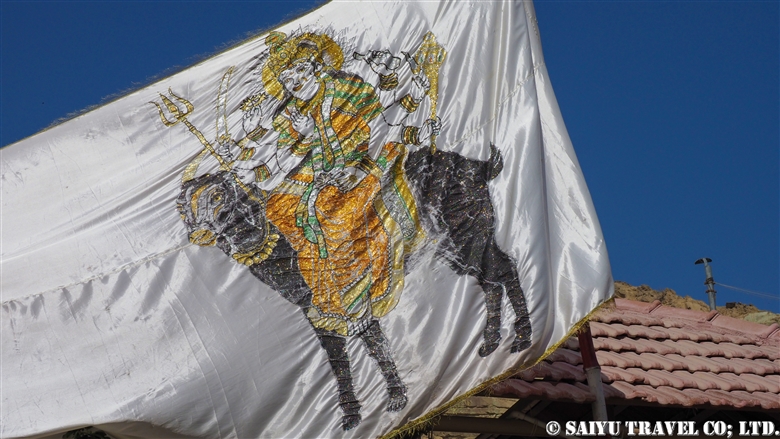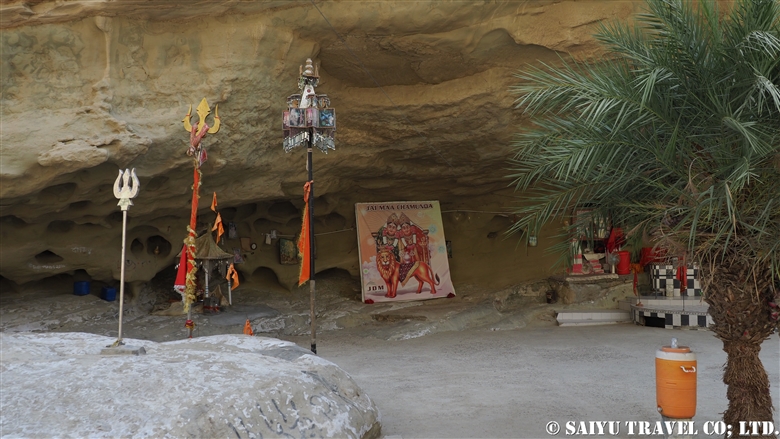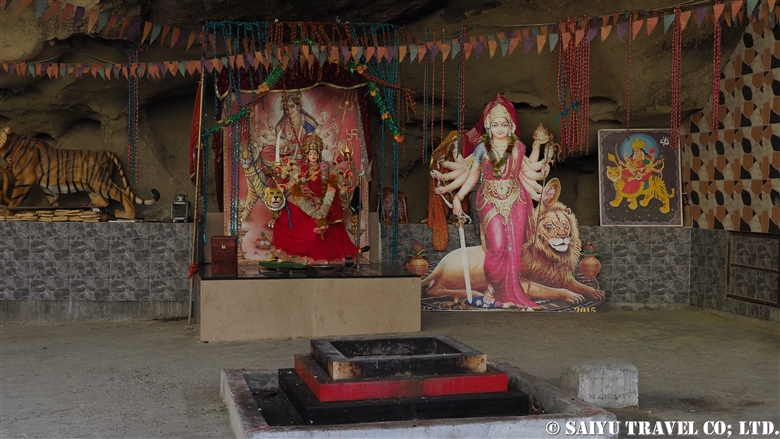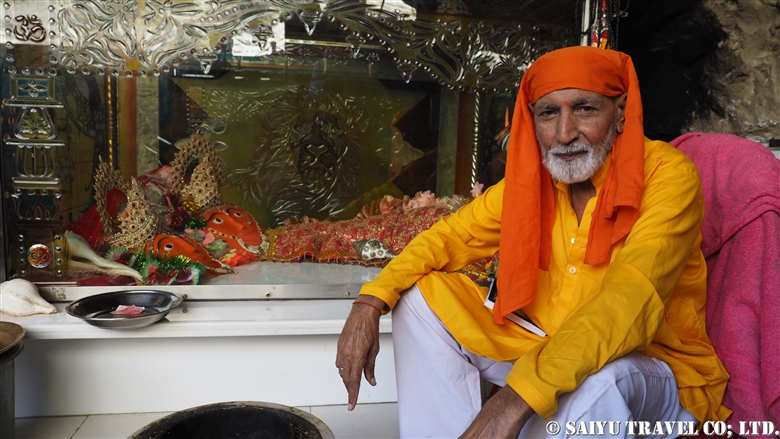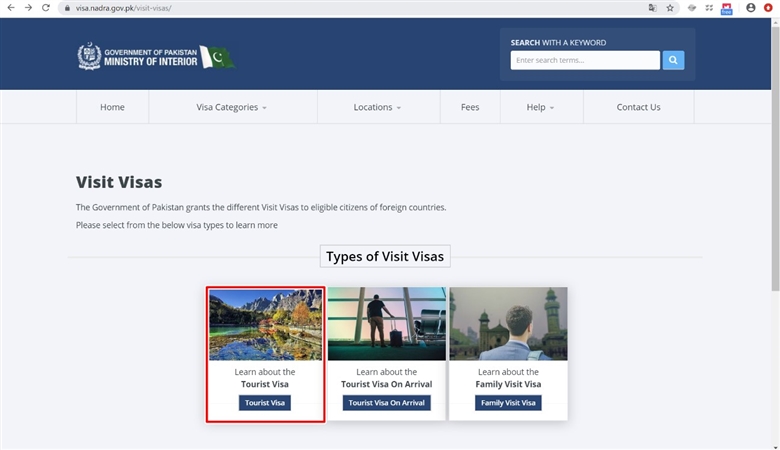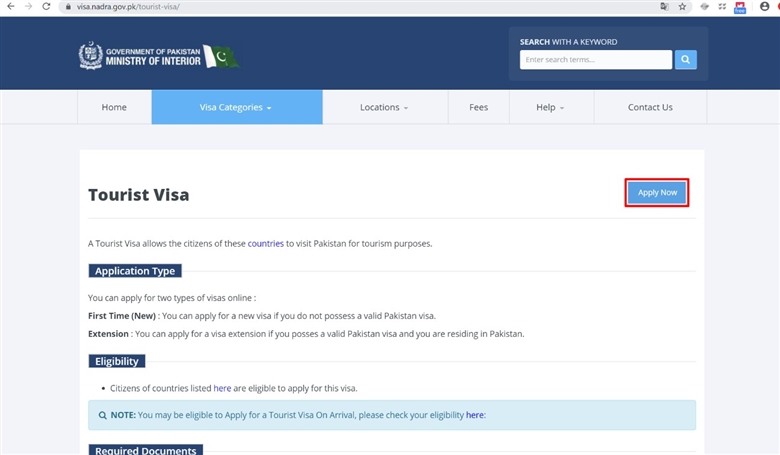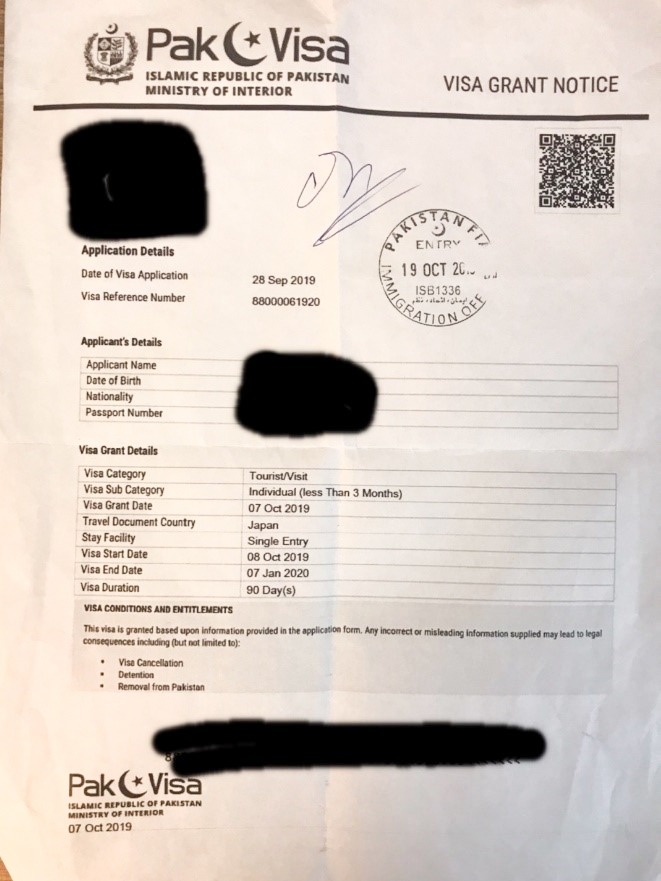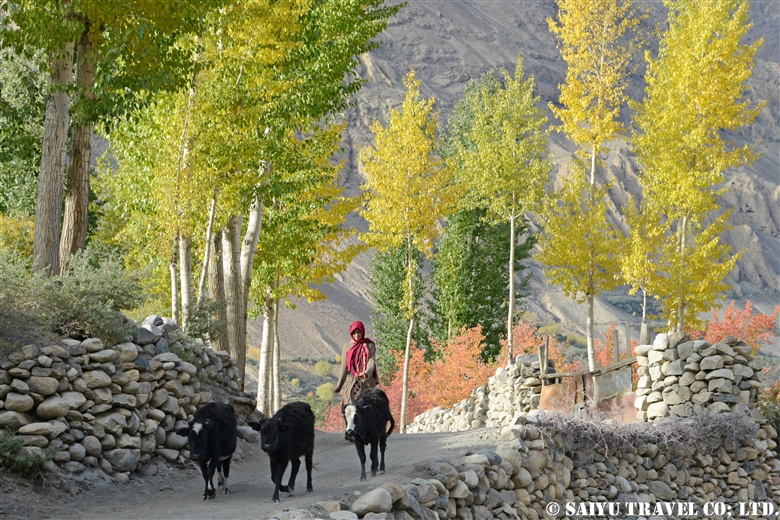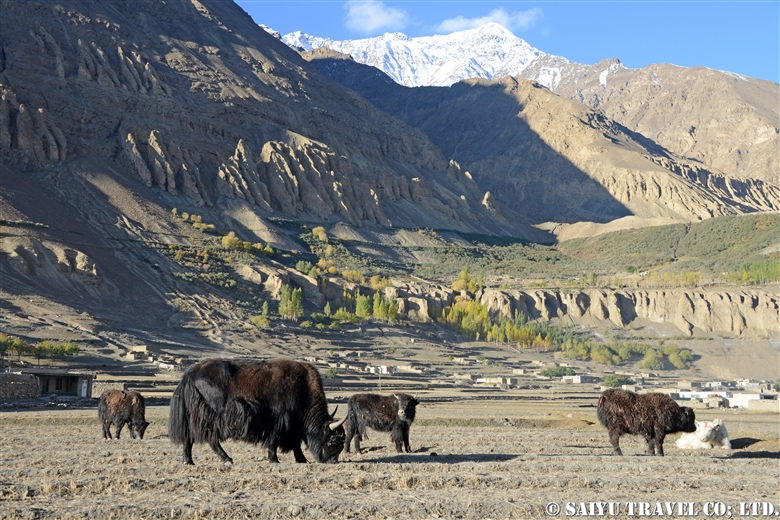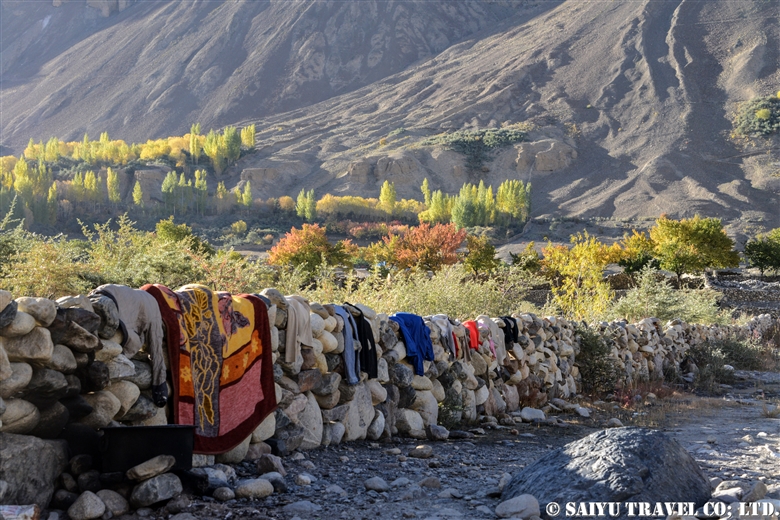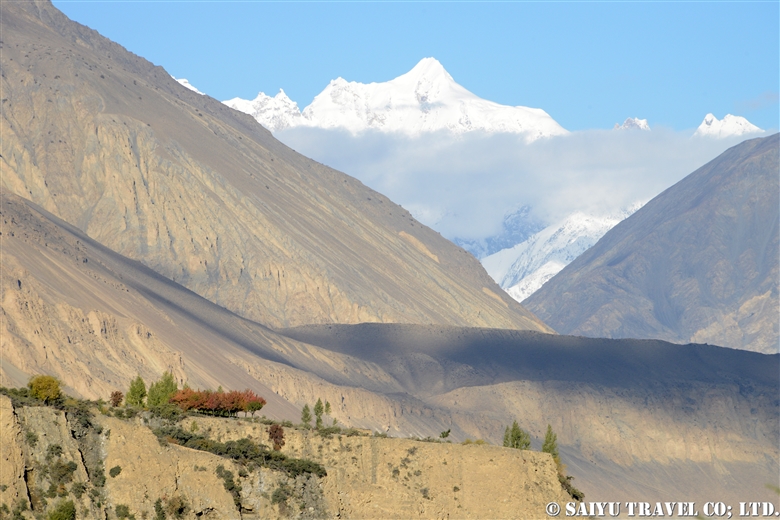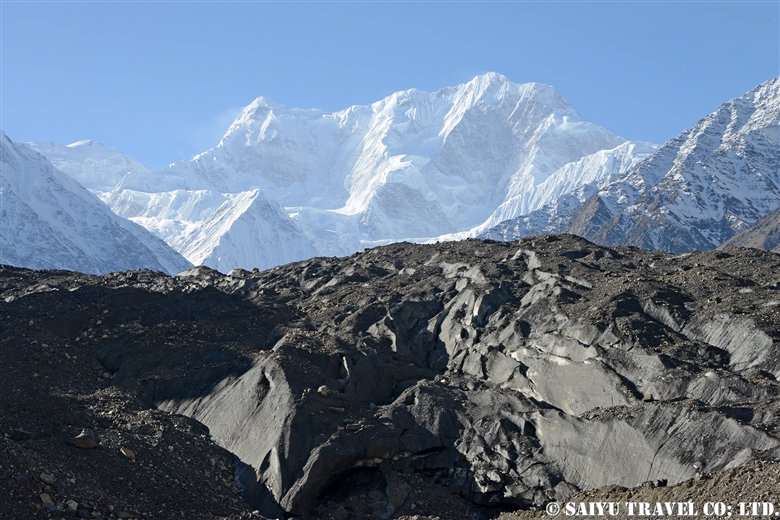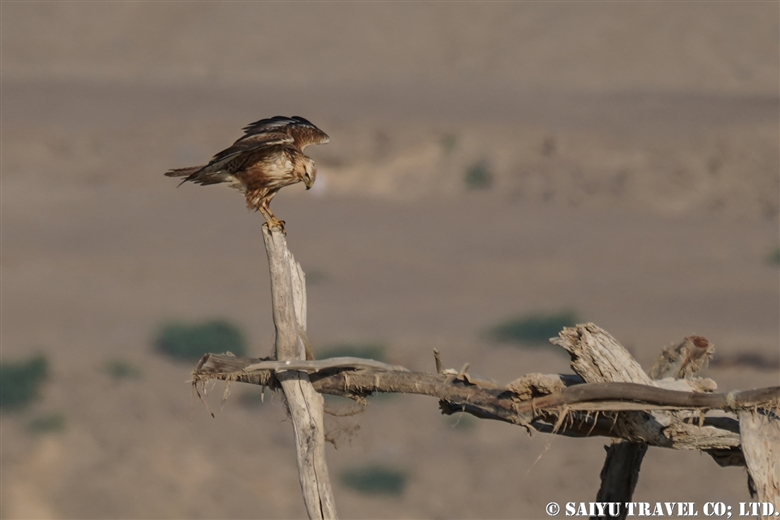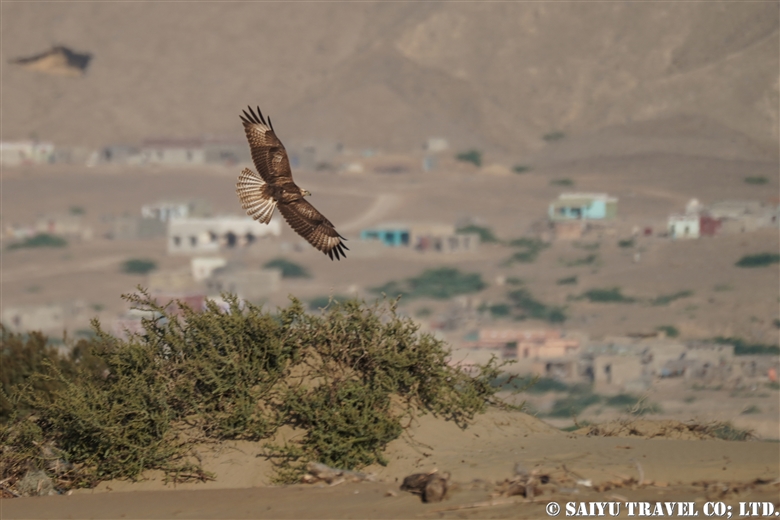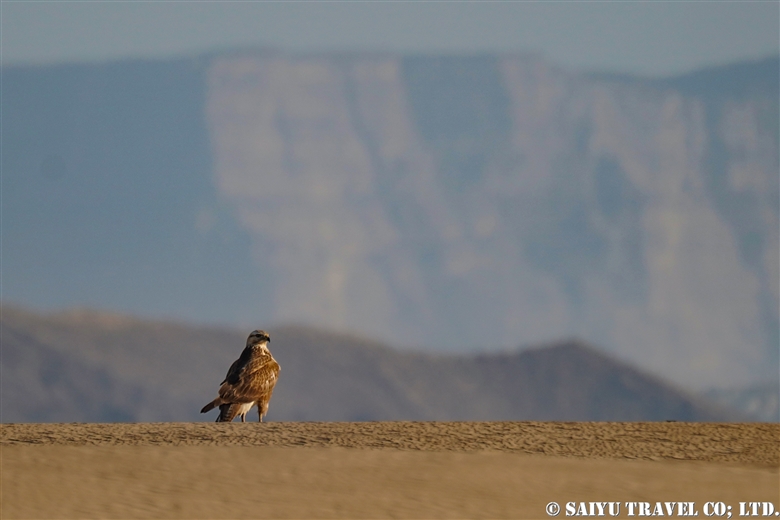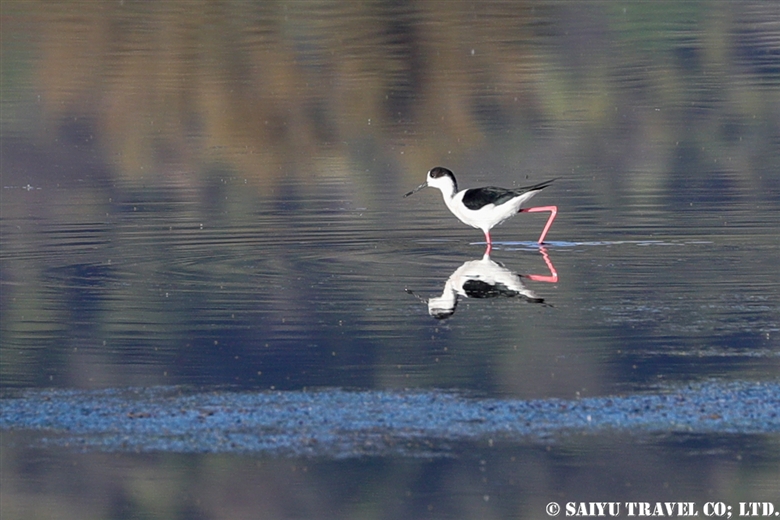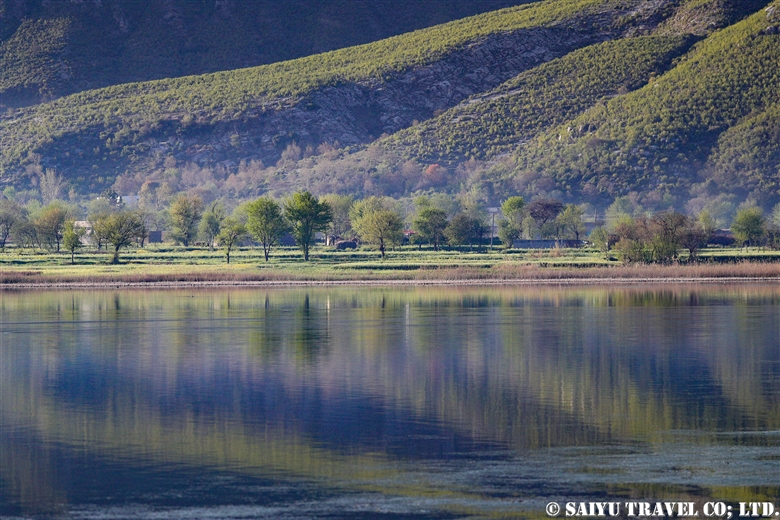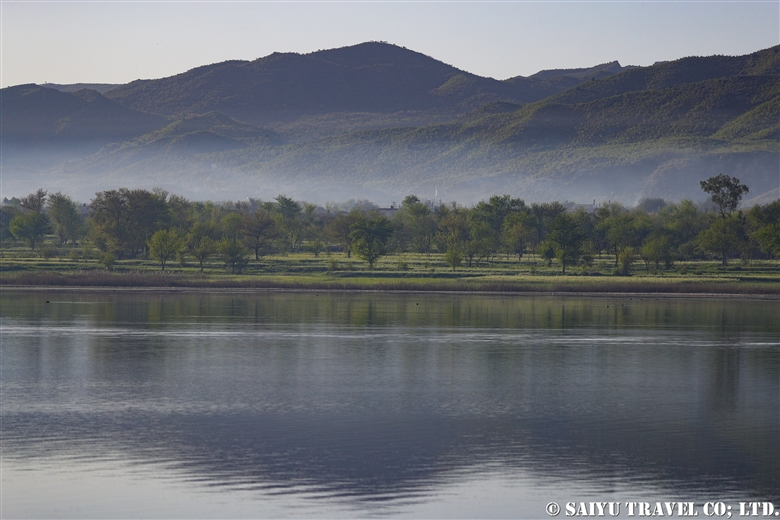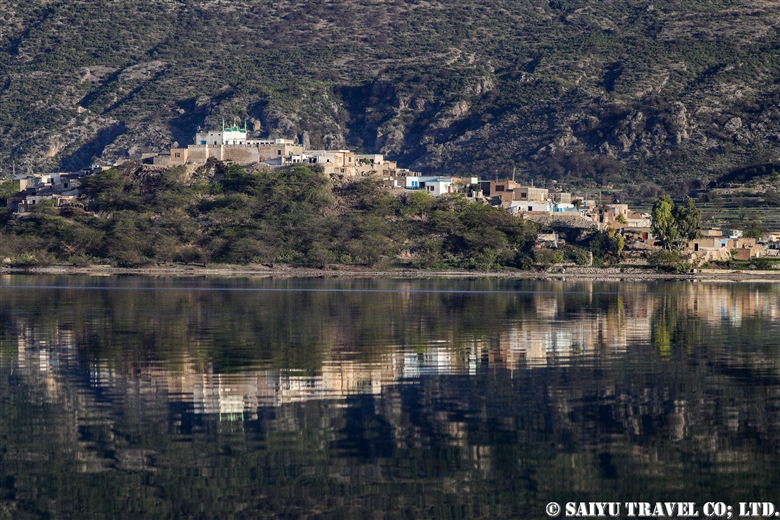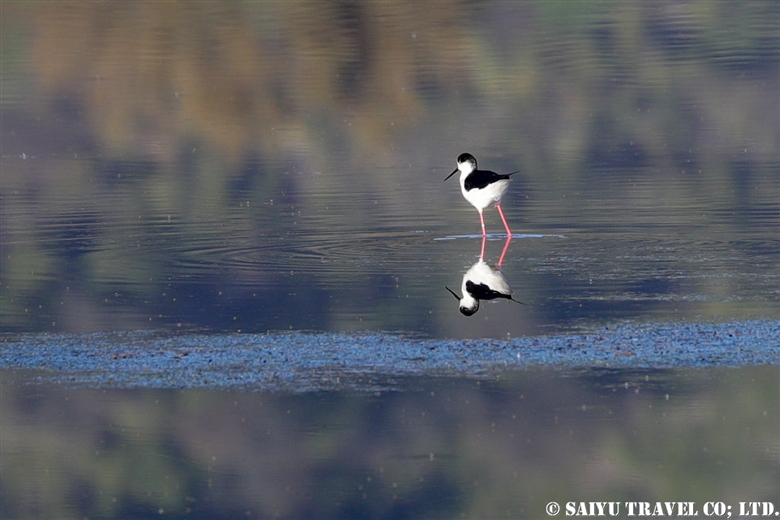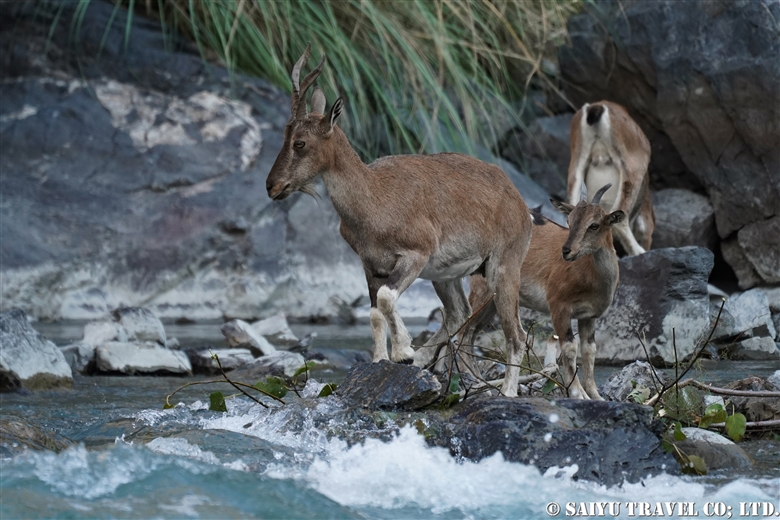
In the mountainous and rugged area near Chitral, there are several places where Kashmir Markhor can be observed.
Markhor is the national animal of Pakistan. There are 4 subspecies; Astor Markhor, Kabul Markhor, Kashmir Markhor, and Suleiman Markhor inhabited in Pakistan.
Indeed, Pakistan is surprisingly a country with a plethora of Markhors.
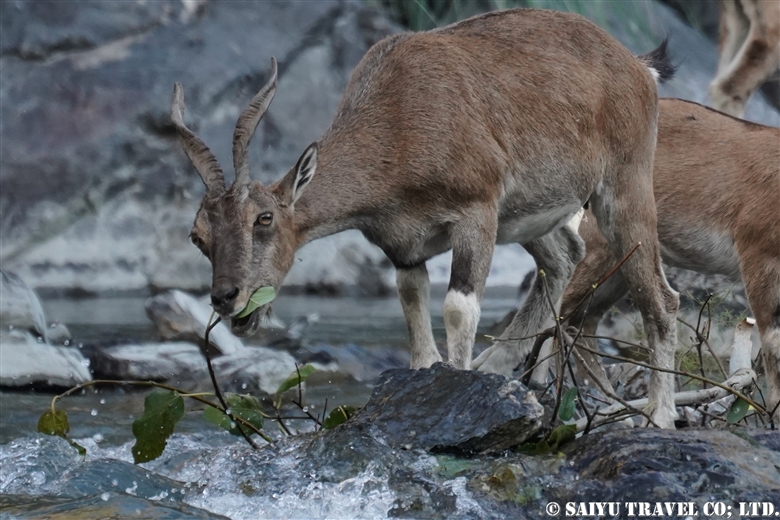
In theTooshi-Shasha Conservancy, on the other side of the river along the way to Garam Chashma (hot spring) from Chitral, several groups of Markhor come to drink water from the river in the afternoon.
During this tour we observed a female Markhor and her kid very closely from the river side. But, only female and kid… Where is male?
Males spend most of the year high on the mountains and they descend to low altitudes for mating in month of December.
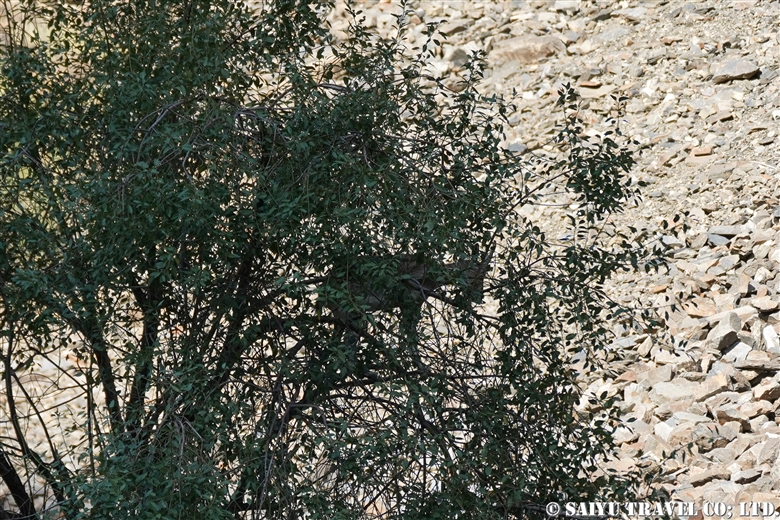
Markhor not only comes to drink water, but also to eat the leaves and bushes that grow on the river bank.
Kashmir Markhor climbing a tree!
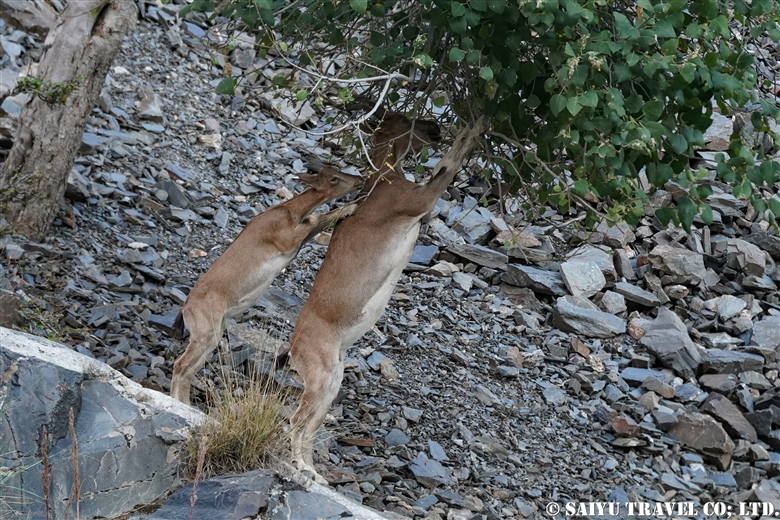
Both mother and kid are standing on hind legs & eating.
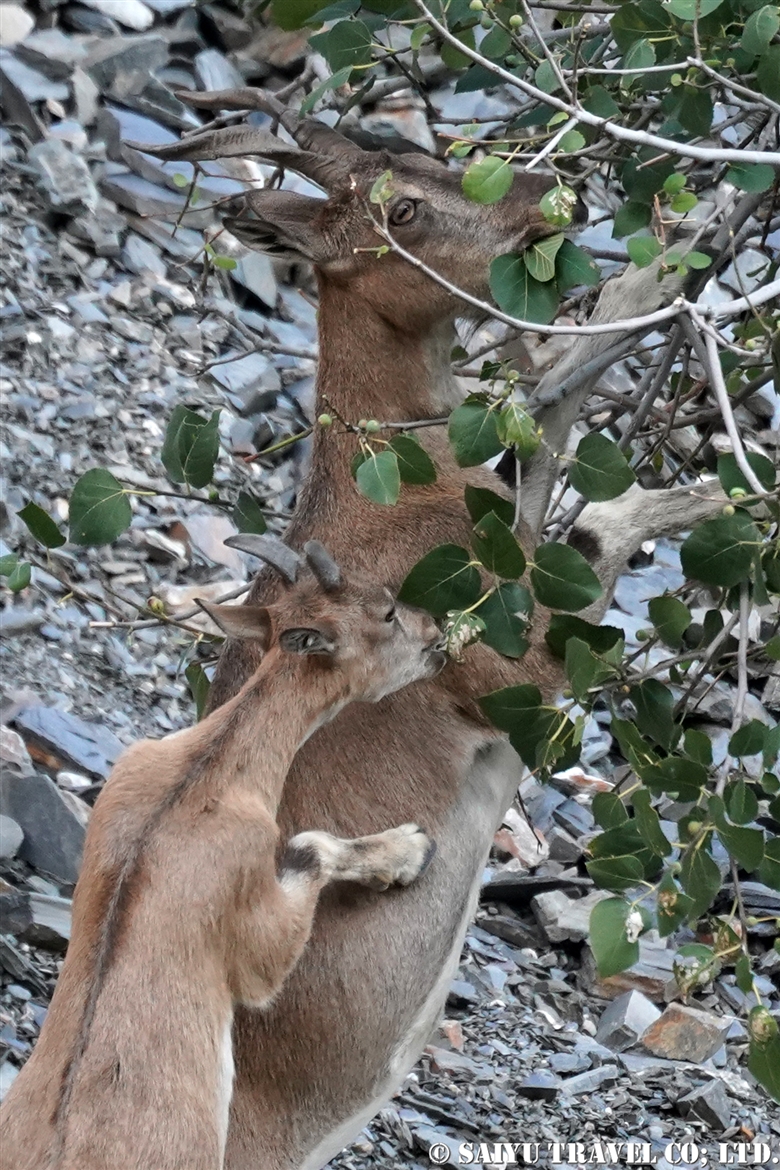
Yes, you have to eat well before the harsh winters start!

During the visit, we did not get information about number of Markhor in the Tooshi-Shasha Conservancy. But at at the Chitral Gol National Park nearby, it is said that the number of Markhor has increased to about 2,500.
In fact, I was able to meet Kashmir Markhor easily both in Tooshi-Shasha Conservancy and Chitral Gol National Park. Next time I would like to see “the male Markhor”.
Photo & Text: Mariko SAWADA
Visit : Oct 2019, Tooshi Game Reserve, Chitral , Khyber Pakhtunkhwa
Tag : Chitral , Chitral Gol National Park , Saiyu Travel Pakistan , Kashmir Markhor , Indus Caavan , Khyber Pakhtunkhwa , Pakistan Travel company , Markhor , Pakistan tour operator , Pakistan Blog , Pakistan Photography Tour , Pakistan Travel Blog , Wildlife tour in Pakistan , Tooshi Game Reserve , Tooshi-Shasha Conservancy , Wildlife of Pakistan







